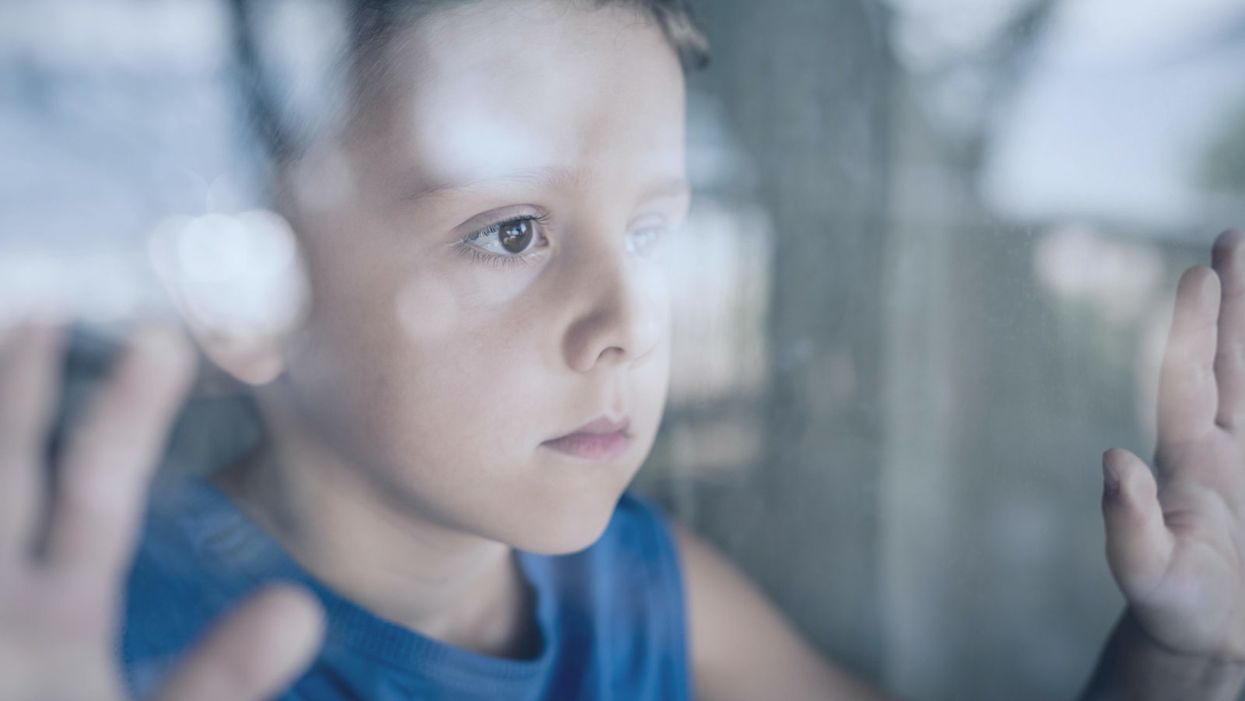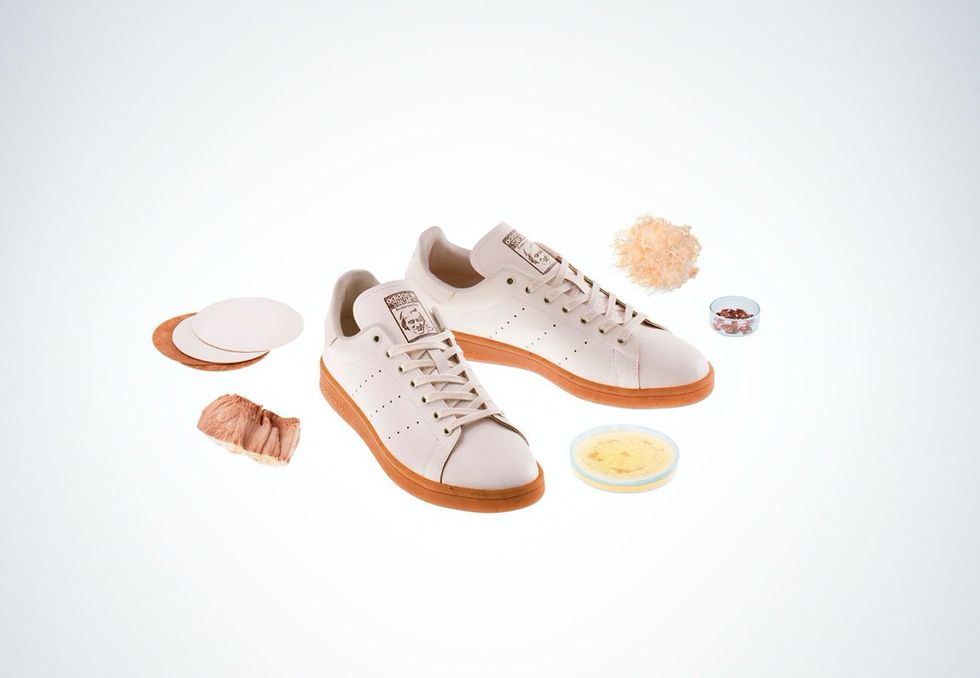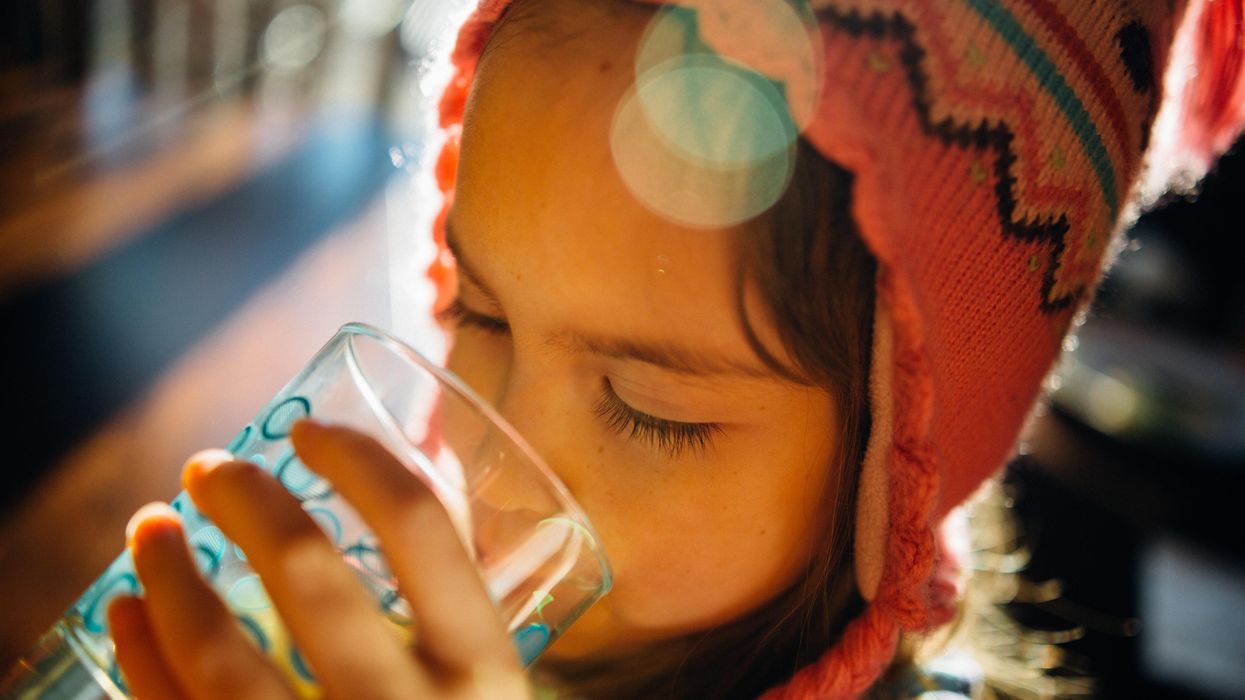Can Genetic Testing Help Shed Light on the Autism Epidemic?

A little boy standing by a window in contemplation. (© altanaka/Fotolia)
Autism cases are still on the rise, and scientists don't know why. In April, the Centers for Disease Control (CDC) reported that rates of autism had increased once again, now at an estimated 1 in 59 children up from 1 in 68 just two years ago. Rates have been climbing steadily since 2007 when the CDC initially estimated that 1 in 150 children were on the autism spectrum.
Some clinicians are concerned that the creeping expansion of autism is causing the diagnosis to lose its meaning.
The standard explanation for this increase has been the expansion of the definition of autism to include milder forms like Asperger's, as well as a heightened awareness of the condition that has improved screening efforts. For example, the most recent jump is attributed to children in minority communities being diagnosed who might have previously gone under the radar. In addition, more federally funded resources are available to children with autism than other types of developmental disorders, which may prompt families or physicians to push harder for a diagnosis.
Some clinicians are concerned that the creeping expansion of autism is causing the diagnosis to lose its meaning. William Graf, a pediatric neurologist at Connecticut Children's Medical Center, says that when a nurse tells him that a new patient has a history of autism, the term is no longer a useful description. "Even though I know this topic extremely well, I cannot picture the child anymore," he says. "Use the words mild, moderate, or severe. Just give me a couple more clues, because when you say autism today, I have no idea what people are talking about anymore."
Genetic testing has emerged as one potential way to remedy the overly broad label by narrowing down a heterogeneous diagnosis to a specific genetic disorder. According to Suma Shankar, a medical geneticist at the University of California, Davis, up to 60 percent of autism cases could be attributed to underlying genetic causes. Common examples include Fragile X Syndrome or Rett Syndrome—neurodevelopmental disorders that are caused by mutations in individual genes and are behaviorally classified as autism.
With more than 500 different mutations associated with autism, very few additional diagnoses provide meaningful information.
Having a genetic diagnosis in addition to an autism diagnosis can help families in several ways, says Shankar. Knowing the genetic origin can alert families to other potential health problems that are linked to the mutation, such as heart defects or problems with the immune system. It may also help clinicians provide more targeted behavioral therapies and could one day lead to the development of drug treatments for underlying neurochemical abnormalities. "It will pave the way to begin to tease out treatments," Shankar says.
When a doctor diagnoses a child as having a specific genetic condition, the label of autism is still kept because it is more well-known and gives the child access to more state-funded resources. Children can thus be diagnosed with multiple conditions: autism spectrum disorder and their specific gene mutation. However, with more than 500 different mutations associated with autism, very few additional diagnoses provide meaningful information. What's more, the presence or absence of a mutation doesn't necessarily indicate whether the child is on the mild or severe end of the autism spectrum.
Because of this, Graf doubts that genetic classifications are really that useful. He tells the story of a boy with epilepsy and severe intellectual disabilities who was diagnosed with autism as a young child. Years later, Graf ordered genetic testing for the boy and discovered that he had a mutation in the gene SYNGAP1. However, this knowledge didn't change the boy's autism status. "That diagnosis [SYNGAP1] turns out to be very specific for him, but it will never be a household name. Biologically it's good to know, and now it's all over his chart. But on a societal level he still needs this catch-all label [of autism]," Graf says.
"It gives some information, but to what degree does that change treatment or prognosis?"
Jennifer Singh, a sociologist at Georgia Tech who wrote the book Multiple Autisms: Spectrums of Advocacy and Genomic Science, agrees. "I don't know that the knowledge gained from just having a gene that's linked to autism," is that beneficial, she says. "It gives some information, but to what degree does that change treatment or prognosis? Because at the end of the day you have to address the issues that are at hand, whatever they might be."
As more children are diagnosed with autism, knowledge of the underlying genetic mutation causing the condition could help families better understand the diagnosis and anticipate their child's developmental trajectory. However, for the vast majority, an additional label provides little clarity or consolation.
Instead of spending money on genetic screens, Singh thinks the resources would be better used on additional services for people who don't have access to behavioral, speech, or occupational therapy. "Things that are really going to matter for this child in their future," she says.
Your Future Smartphone May Detect Problems in Your Water
Biosensors on a touchscreen are showing promise for detecting arsenic and lead in water.
In 2014, the city of Flint, Michigan switched the residents' water supply to the Flint river, citing cheaper costs. However, due to improper filtering, lead contaminated this water, and according to the Associated Press, many of the city's residents soon reported health issues like hair loss and rashes. In 2015, a report found that children there had high levels of lead in their blood. The National Resource Defense Council recently discovered there could still be as many as twelve million lead pipes carrying water to homes across the U.S.
What if Flint residents and others in afflicted areas could simply flick water onto their phone screens and an app would tell them if they were about to drink contaminated water? This is what researchers at the University of Cambridge are working on to prevent catastrophes like what occurred in Flint, and to prepare for an uncertain future of scarcer resources.
Underneath the tough glass of our phone screen lies a transparent layer of electrodes. Because our bodies hold an electric charge, when our finger touches the screen, it disrupts the electric field created among the electrodes. This is how the screen can sense where a touch occurs. Cambridge scientists used this same idea to explore whether the screen could detect charges in water, too. Metals like arsenic and lead can appear in water in the form of ions, which are charged particles. When the ionic solution is placed on the screen's surface, the electrodes sense that charge like how they sense our finger.
Imagine a new generation of smartphones with a designated area of the screen responsible for detecting contamination—this is one of the possible futures the researchers propose.
The experiment measured charges in various electrolyte solutions on a touchscreen. The researchers found that a thin polymer layer between the electrodes and the sample solution helped pick up the charges.
"How can we get really close to the touch electrodes, and be better than a phone screen?" Horstmann, the lead scientist on the study, asked himself while designing the protective coating. "We found that when we put electrolytes directly on the electrodes, they were too close, even short-circuiting," he said. When they placed the polymer layer on top the electrodes, however, this short-circuiting did not occur. Horstmann speaks of the polymer layer as one of the key findings of the paper, as it allowed for optimum conductivity. The coating they designed was much thinner than what you'd see with a typical smartphone touchscreen, but because it's already so similar, he feels optimistic about the technology's practical applications in the real world.
While the Cambridge scientists were using touchscreens to measure water contamination, Dr. Baojun Wang, a synthetic biologist at the University of Edinburgh, along with his team, created a way to measure arsenic contamination in Bangladesh groundwater samples using what is called a cell-based biosensor. These biosensors use cornerstones of cellular activity like transcription and promoter sequences to detect the presence of metal ions in water. A promoter can be thought of as a "flag" that tells certain molecules where to begin copying genetic code. By hijacking this aspect of the cell's machinery and increasing the cell's sensing and signal processing ability, they were able to amplify the signal to detect tiny amounts of arsenic in the groundwater samples. All this was conducted in a 384-well plate, each well smaller than a pencil eraser.
They placed arsenic sensors with different sensitivities across part of the plate so it resembled a volume bar of increasing levels of arsenic, similar to diagnostics on a Fitbit or glucose monitor. The whole device is about the size of an iPhone, and can be scaled down to a much smaller size.
Dr. Wang says cell-based biosensors are bringing sensing technology closer to field applications, because their machinery uses inherent cellular activity. This makes them ideal for low-resource communities, and he expects his device to be affordable, portable, and easily stored for widespread use in households.
"It hasn't worked on actual phones yet, but I don't see any reason why it can't be an app," says Horstmann of their technology. Imagine a new generation of smartphones with a designated area of the screen responsible for detecting contamination—this is one of the possible futures the researchers propose. But industry collaborations will be crucial to making their advancements practical. The scientists anticipate that without collaborative efforts from the business sector, the public might have to wait ten years until this becomes something all our smartphones are capable of—but with the right partners, "it could go really quickly," says Dr. Elizabeth Hall, one of the authors on the touchscreen water contamination study.
"That's where the science ends and the business begins," Dr. Hall says. "There is a lot of interest coming through as a result of this paper. I think the people who make the investments and decisions are seeing that there might be something useful here."
As for Flint, according to The Detroit News, the city has entered the final stages in removing lead pipe infrastructure. It's difficult to imagine how many residents might fare better today if they'd had the technology that scientists are now creating.
Of all its tragedy, COVID-19 has increased demand for at-home testing methods, which has carried over to non-COVID-19-related devices. Various testing efforts are now in the public eye.
"I like that the public is watching these directions," says Horstmann. "I think there's a long way to go still, but it's exciting."
Fungus is the ‘New Black’ in Eco-Friendly Fashion
On the left, a Hermès bag made using fine mycelium as a leather alternative, made in partnership with the biotech company MycoWorks; on right, a sheet of mycelium "leather."
A natural material that looks and feels like real leather is taking the fashion world by storm. Scientists view mycelium—the vegetative part of a mushroom-producing fungus—as a planet-friendly alternative to animal hides and plastics.
Products crafted from this vegan leather are emerging, with others poised to hit the market soon. Among them are the Hermès Victoria bag, Lululemon's yoga accessories, Adidas' Stan Smith Mylo sneaker, and a Stella McCartney apparel collection.

The Adidas' Stan Smith Mylo concept sneaker, made in partnership with Bolt Threads, uses an alternative leather grown from mycelium; a commercial version is expected in the near future.
Adidas
Hermès has held presales on the new bag, says Philip Ross, co-founder and chief technology officer of MycoWorks, a San Francisco Bay area firm whose materials constituted the design. By year-end, Ross expects several more clients to debut mycelium-based merchandise. With "comparable qualities to luxury leather," mycelium can be molded to engineer "all the different verticals within fashion," he says, particularly footwear and accessories.
More than a half-dozen trailblazers are fine-tuning mycelium to create next-generation leather materials, according to the Material Innovation Initiative, a nonprofit advocating for animal-free materials in the fashion, automotive, and home-goods industries. These high-performance products can supersede items derived from leather, silk, down, fur, wool, and exotic skins, says A. Sydney Gladman, the institute's chief scientific officer.
That's only the beginning of mycelium's untapped prowess. "We expect to see an uptick in commercial leather alternative applications for mycelium-based materials as companies refine their R&D [research and development] and scale up," Gladman says, adding that "technological innovation and untapped natural materials have the potential to transform the materials industry and solve the enormous environmental challenges it faces."
In fewer than 10 days in indoor agricultural farms, "we grow large slabs of mycelium that are many feet wide and long. We are not confined to the shape or geometry of an animal."
Reducing our carbon footprint becomes possible because mycelium can flourish in indoor farms, using agricultural waste as feedstock and emitting inherently low greenhouse gas emissions. Carbon dioxide is the primary greenhouse gas. "We often think that when plant tissues like wood rot, that they go from something to nothing," says Jonathan Schilling, professor of plant and microbial biology at the University of Minnesota and a member of MycoWorks' Scientific Advisory Board.
But that assumption doesn't hold true for all carbon in plant tissues. When the fungi dominating the decomposition of plants fulfill their function, they transform a large portion of carbon into fungal biomass, Schilling says. That, in turn, ends up in the soil, with mycelium forming a network underneath that traps the carbon.
Unlike the large amounts of fossil fuels needed to produce styrofoam, leather and plastic, less fuel-intensive processing is involved in creating similar materials with a fungal organism. While some fungi consist of a single cell, others are multicellular and develop as very fine threadlike structures. A mass of them collectively forms a "mycelium" that can be either loose and low density or tightly packed and high density. "When these fungi grow at extremely high density," Schilling explains, "they can take on the feel of a solid material such as styrofoam, leather or even plastic."
Tunable and supple in the cultivation process, mycelium is also reliably sturdy in composition. "We believe that mycelium has some unique attributes that differentiate it from plastic-based and animal-derived products," says Gavin McIntyre, who co-founded Ecovative Design, an upstate New York-based biomaterials company, in 2007 with the goal of displacing some environmentally burdensome materials and making "a meaningful impact on our planet."
After inventing a type of mushroom-based packaging for all sorts of goods, in 2013 the firm ventured into manufacturing mycelium that can be adapted for textiles, he says, because mushrooms are "nature's recycling system."
The company aims for its material—which is "so tough and tenacious" that it doesn't require any plastic add-on as reinforcement—to be generally accessible from a pricing standpoint and not confined to a luxury space. The cost, McIntyre says, would approach that of bovine leather, not the more upscale varieties of lamb and goat skins.
Already, production has taken off by leaps and bounds. In fewer than 10 days in indoor agricultural farms, "we grow large slabs of mycelium that are many feet wide and long," he says. "We are not confined to the shape or geometry of an animal," so there's a much lower scrap rate.
Decreasing the scrap rate is a major selling point. "Our customers can order the pieces to the way that they want them, and there is almost no waste in the processing," explains Ross of MycoWorks. "We can make ours thinner or thicker," depending on a client's specific needs. Growing materials locally also results in a reduction in transportation, shipping, and other supply chain costs, he says.
Yet another advantage to making things out of mycelium is its biodegradability at the end of an item's lifecycle. When a pair of old sneakers lands in a compost pile or landfill, it decomposes thanks to microbial processes that, once again, involve fungi. "It is cool to think that the same organism used to create a product can also be what recycles it, perhaps building something else useful in the same act," says biologist Schilling. That amounts to "more than a nice business model—it is a window into how sustainability works in nature."
A product can be called "sustainable" if it's biodegradable, leaves a minimal carbon footprint during production, and is also profitable, says Preeti Arya, an assistant professor at the Fashion Institute of Technology in New York City and faculty adviser to a student club of the American Association of Textile Chemists and Colorists.
On the opposite end of the spectrum, products composed of petroleum-based polymers don't biodegrade—they break down into smaller pieces or even particles. These remnants pollute landfills, oceans, and rivers, contaminating edible fish and eventually contributing to the growth of benign and cancerous tumors in humans, Arya says.
Commending the steps a few designers have taken toward bringing more environmentally conscious merchandise to consumers, she says, "I'm glad that they took the initiative because others also will try to be part of this competition toward sustainability." And consumers will take notice. "The more people become aware, the more these brands will start acting on it."
A further shift toward mycelium-based products has the capability to reap tremendous environmental dividends, says Drew Endy, associate chair of bioengineering at Stanford University and president of the BioBricks Foundation, which focuses on biotechnology in the public interest.
The continued development of "leather surrogates on a scaled and sustainable basis will provide the greatest benefit to the greatest number of people, in perpetuity," Endy says. "Transitioning the production of leather goods from a process that involves the industrial-scale slaughter of vertebrate mammals to a process that instead uses renewable fungal-based manufacturing will be more just."

